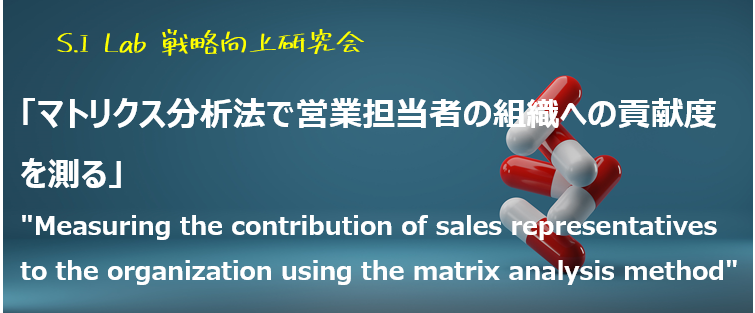営業担当者の評価に「組織への貢献度」を取り入れているでしょうか?
達成率や進捗率などの売上目標や、KPIなどの活動目標による評価を行っていること多いと思います。
しかしこの評価指標はいずれもインハウスでの評価です。
営業担当者であれば、決められた行動を決められた数だけこなすことで満足はしていないはずです。
競合の担当者を上回る活動の量や質で、顧客とのエンゲージメントを高め、処方インパクトを生み出そうと日々自分と戦っています。
県立病院担当のBさんは実に組織の売上の46%を担い、安定を与えています。
大学担当のEさんは、各社エース級の担当者を送り込む競争環境の厳しいなかで、なんとか現状を維持しています。
このフレームで競合に競り負けると組織の売上に大きなダメージを受けます。
逆にBさんがAフレームにランクアップすれば組織のシェアは3%向上します。
組織として最優先でリソースを配分すべきです。
インハウスの評価だけでは本当に頑張っている営業担当者の努力を見過ごしてしまいます。
真に組織へ貢献している人に対して賞賛を与えるべきです。
“Measuring the contribution of sales representatives to the organization using the matrix analysis method”
Do you incorporate “contribution to the organization” into your evaluation of sales reps?
I think that there are many cases where evaluation is performed based on sales targets such as achievement rate and progress rate, and activity targets such as KPI.
However, all of these metrics are in-house evaluations.
I know if you’re a sales rep, you’re probably not satisfied with doing a set number of actions.
Sales reps challenge myself every day to increase customer engagement and create sales impact with the quantity and quality of activities that outperform our competitors.
Mr. B, who is in charge of the prefectural hospital, is actually responsible for 46% of the sales of the organization, giving stability.
Mr. E, who is in charge of the university, manages to maintain the status quo in a tough competitive environment where each company sends out A class personnel.
Losing a competition on this frame will do a great deal of damage to your organization’s sales.
Conversely, if Mr. B ranks up to A frame, the organization’s share will increase by 3%.
So, organizations should prioritize resource allocation.
In-house evaluation alone overlooks the efforts of hard-working sales rep. Praise should be given to those who truly contribute to the organization.

